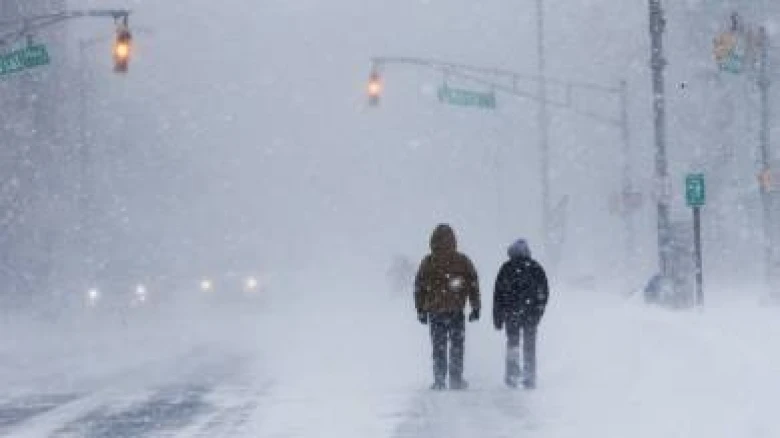Article

Many flights have been cancelled as the storm deepens, with forecasts predicting the coldest Christmas in decades...
Digital Desk: A powerful Arctic winter storm has placed more than 135 million people under weather alerts ahead of the busiest travel days of the year in the US. The freezing weather could cause havoc across the United States and Canada. In just five to ten minutes, the storm might cause frostbite on bare skin, according to experts. Weather warnings extend from coast to coast, as far south as the US-Mexico border and Florida.
Many flights have been cancelled as the storm deepens, with forecasts predicting the coldest Christmas in decades. Temperatures between -50F (-45C) and -70F are expected in some portions of the United States by the end of this week, according to the National Weather Service (NWS).
Meteorologists have also predicted that the winter storm will intensify into a "bomb cyclone" by Saturday.
What is a bomb cyclone?
A bomb cyclone is a storm that intensifies quickly. These develop when air rapidly ascends in the atmosphere near Earth's surface, causing a significant drop in barometric pressure of at least 24 millibars within 24 hours. Wind swirls in at the base of the storm as the air rises. As long as the air at the top of the storm rises faster than it can be replaced, the barometric pressure will drop.
Why is it called a bomb cyclone?
Meteorologists have compared the abrupt drop in pressure to the detonation of a bomb, using terms like "explosive cyclogenesis" and "bombogenesis" to characterize the storm's creation process. Therefore, the term bomb cyclone is used since it relates to the speed with which a storm arises rather than its absolute strength.
What differentiates a bomb cyclone from a hurricane?
Hurricanes typically occur in tropical climates, driven by warm oceans. For this reason, they're most common in the summer or early fall, when seawater is at its warmest.
Leave A Comment